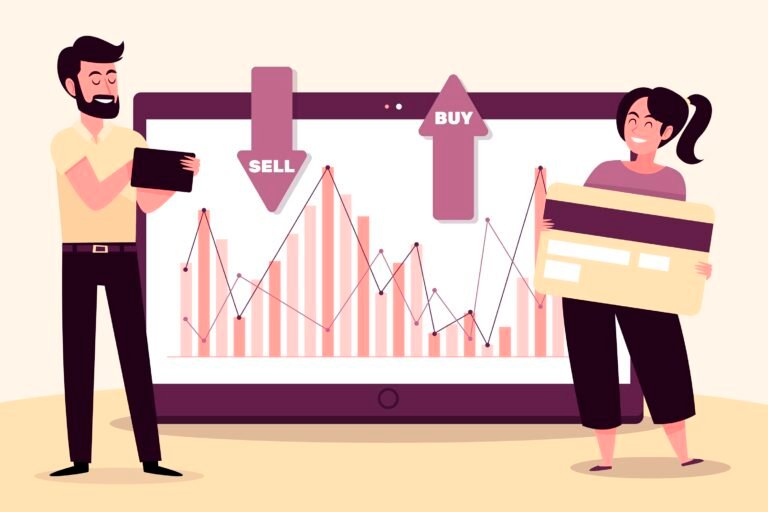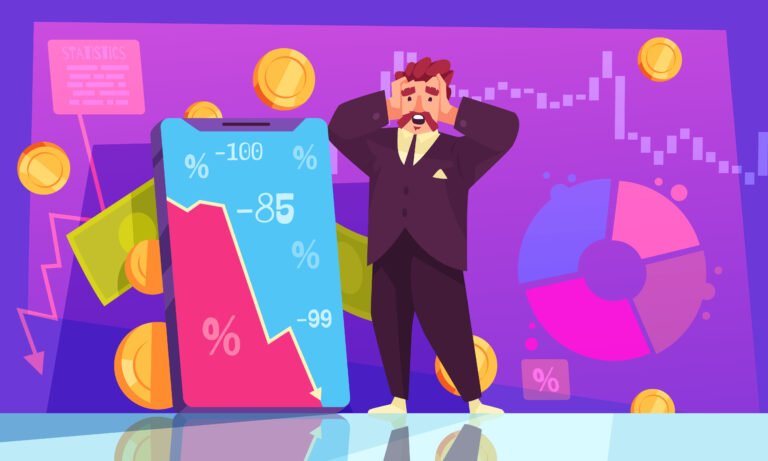1. Introduction: Why Comparing ETFs and Mutual Funds Matters
When it comes to building a strong investment portfolio, choosing the right types of funds is crucial. Exchange-Traded Funds (ETFs) and Mutual Funds are two of the most popular options available to individual investors. Although they might seem similar at first glance, they differ significantly in how they operate, cost structure, and tax implications. Understanding these differences can save you money, reduce risks, and help you reach your financial goals more efficiently.

Table of Contents
Common Misconceptions Among Beginners
Many beginners assume ETFs and mutual funds are interchangeable, or that one is simply “better” than the other across the board. Some believe ETFs are only for active traders, or that mutual funds always carry higher fees. Others overlook how taxes affect their returns depending on the type of fund they choose. These misunderstandings can lead to suboptimal investment choices. This article aims to clear up these myths and reveal the surprising truths that most beginners miss.
2. What Are ETFs and Mutual Funds?
Understanding Exchange-Traded Funds (ETFs)
ETFs are investment funds that trade on stock exchanges just like individual stocks. They hold a diversified portfolio of assets—such as stocks, bonds, or commodities—and their price fluctuates throughout the trading day based on market demand and supply. ETFs often track an index, making them a popular choice for passive investors seeking low-cost exposure to the market.
Understanding Mutual Funds
Mutual funds pool money from multiple investors to buy a broad range of securities managed by professional portfolio managers. Unlike ETFs, mutual funds are priced only once at the end of the trading day, based on their net asset value (NAV). They can be actively managed, with managers making buy and sell decisions, or passively managed, tracking an index similar to ETFs.
Key Differences at a Glance
- Trading: ETFs trade like stocks during market hours; mutual funds trade once daily after market close.
- Pricing: ETFs have fluctuating prices; mutual funds have fixed daily NAV pricing.
- Management: ETFs tend to be passively managed; mutual funds can be active or passive.
- Minimum Investment: ETFs can be bought per share; mutual funds often require minimum investments.
3. Cost Differences: Fees and Expenses
Expense Ratios: ETFs vs. Mutual Funds
One of the biggest factors investors consider is the ongoing fee, known as the expense ratio, charged by funds to manage your money. Generally, ETFs have lower expense ratios compared to mutual funds—especially actively managed ones—because many ETFs follow passive index strategies that require less hands-on management. Mutual funds, particularly active funds, often have higher fees due to research and trading costs incurred by portfolio managers.
Trading Commissions and Fees
While ETFs typically boast lower expense ratios, investors should also consider trading commissions. Since ETFs trade like stocks, every buy or sell can trigger a brokerage commission (though many platforms now offer commission-free ETFs). Mutual funds, on the other hand, are usually purchased directly from the fund company without trading commissions, but sometimes with sales loads or redemption fees.
Hidden Costs You Should Know About
Beyond visible fees, some costs aren’t immediately obvious. Mutual funds may distribute capital gains to investors, which can trigger unexpected tax bills. ETFs usually minimize these distributions due to their unique structure. Additionally, bid-ask spreads in ETF trading can add small but meaningful costs, especially for less liquid ETFs. Being aware of all these costs can make a big difference in your net returns.
4. Trading Flexibility and Accessibility
How ETFs Trade Like Stocks
One of the standout features of ETFs is their ability to be bought and sold throughout the trading day, just like individual stocks. This intraday trading flexibility allows investors to react quickly to market changes, place limit or stop orders, and even engage in short selling or margin buying. For active traders and those who want tighter control over their entry and exit points, ETFs provide a significant advantage.
Mutual Fund Purchase and Redemption Processes
Mutual funds, in contrast, do not trade on exchanges. Instead, investors buy or redeem shares directly through the fund company or broker, usually at the net asset value (NAV) calculated at the end of the trading day. This means transactions only execute once daily, limiting the ability to respond instantly to market moves. While this might suit long-term investors who prefer a “set it and forget it” approach, it can be a drawback for those seeking more flexibility.
Impact on Investors’ Strategies
This fundamental difference impacts investment strategies significantly. ETFs offer versatility for tactical investing or dollar-cost averaging with precise timing, while mutual funds are better aligned with systematic, long-term investing without the need to monitor the market continuously. Understanding how each fund type’s trading mechanism fits your style can improve your overall investment experience.
5. Tax Efficiency: What Beginners Often Overlook
How ETFs Offer Tax Advantages
ETFs are often praised for their tax efficiency compared to mutual funds. This is largely due to the “in-kind” creation and redemption process ETFs use, which allows them to limit the realization and distribution of capital gains. As a result, ETF investors typically face fewer taxable events throughout the year, keeping more of their returns intact.
Mutual Funds and Capital Gains Distributions
Mutual funds, especially actively managed ones, frequently buy and sell securities within the portfolio. These transactions can generate capital gains, which the fund must distribute to shareholders annually. Even if you haven’t sold your mutual fund shares, you may owe taxes on these gains. This can lead to unexpected tax bills that eat into your overall investment returns.
Real-Life Tax Impact Examples
For example, an investor holding a taxable mutual fund might receive a capital gains distribution that triggers a tax liability despite no changes in their own holdings. In contrast, an ETF tracking a similar index might avoid these distributions, leading to lower taxable income. Over time, this tax efficiency can contribute to better after-tax returns, especially in taxable accounts.
6. Performance and Investment Options
Comparing Returns: ETFs vs. Mutual Funds
When it comes to raw performance, ETFs and mutual funds tracking the same index or asset class often deliver very similar returns, especially among passively managed funds. However, actively managed mutual funds may either outperform or underperform ETFs depending on the manager’s skill and market conditions. It’s important to evaluate each fund individually rather than assuming one category consistently beats the other.
Variety and Specialization of Funds Available
Both ETFs and mutual funds offer a wide array of investment options covering stocks, bonds, sectors, commodities, and even alternative assets. ETFs have grown rapidly, now including niche and thematic funds that allow investors to target specific trends. Mutual funds still dominate in certain active management strategies and specialized investment areas that ETFs may not cover as extensively.
Active vs. Passive Management
While most ETFs are passively managed, tracking market indexes, mutual funds offer a broader choice between active and passive management styles. Active mutual funds seek to outperform the market through research and portfolio adjustments but come with higher fees and variable results. Understanding your appetite for risk, cost tolerance, and investment goals will help you decide which management style suits you best.
7. Transparency and Information Access
Daily Pricing and Holdings Disclosure in ETFs
One of the key advantages of ETFs is their high level of transparency. ETFs disclose their holdings daily, allowing investors to see exactly what assets they own at any given time. Additionally, ETFs trade throughout the day with real-time pricing, giving investors clear insights into the fund’s market value and liquidity.
Mutual Funds’ Reporting Schedule
Mutual funds, in contrast, typically disclose their holdings on a monthly or quarterly basis. Their prices are set only once per day after the market closes, based on the net asset value (NAV). This lag in reporting can make it harder for investors to know the exact composition of their mutual fund investments at any point in time.
Why Transparency Matters
Transparency is crucial for investors who want to monitor risk exposure, sector weightings, or changes in investment strategy. ETFs’ frequent disclosure makes them appealing for those who prefer up-to-date information to make informed decisions. Mutual funds may suit investors who prioritize professional management over daily oversight, but understanding these differences helps align your investment approach with your comfort level.
8. Minimum Investment Requirements
ETFs: Buying by Share
ETFs allow investors to purchase as little as a single share, making them highly accessible for beginners or those with limited capital. This flexibility means you can start investing with a relatively small amount of money and gradually build your portfolio over time.
Mutual Funds: Minimums That Can Add Up
Many mutual funds require a minimum initial investment, which can range from a few hundred to several thousand dollars. Some funds also have minimum subsequent investment amounts. These requirements might pose a barrier for small investors or those just starting out, limiting their ability to diversify immediately.
What This Means for Small Investors
If you’re working with a tight budget, ETFs often provide a more accessible way to enter the market without large upfront commitments. However, some mutual funds waive minimums for retirement accounts or systematic investment plans, so it’s worth exploring your options based on your investment goals and account type.
9. Which One Is Right for You?
Assessing Your Investment Goals and Style
Your choice between ETFs and mutual funds should align with your financial goals, investment timeline, and comfort with managing trades. Are you looking for a low-cost, hands-off way to build wealth over the long term? Or do you want flexibility to react quickly to market movements? Understanding your priorities helps narrow down the best fit.
When ETFs Make More Sense
ETFs are ideal if you want trading flexibility, lower expense ratios, and greater tax efficiency. They suit investors comfortable with managing their own trades and those who prefer transparent, real-time pricing. ETFs are also a good choice if you’re starting with a smaller investment amount or want to take advantage of niche or thematic funds.
When Mutual Funds May Be a Better Fit
Mutual funds can be advantageous if you prefer professional active management or want to automate your investing through retirement accounts and systematic plans. They often provide access to strategies and sectors that ETFs may not cover comprehensively. For investors who dislike intraday trading and prefer end-of-day pricing, mutual funds offer a simpler, more hands-off experience.
10. The Surprising Truth Most Beginners Miss
Why Cost Isn’t the Only Factor
While fees and expenses are important, focusing solely on cost can lead to overlooking other critical elements like tax efficiency, trading flexibility, and fund transparency. A low-cost fund that doesn’t fit your investment style or tax situation might underperform in real-world results compared to a slightly higher-cost option that aligns better with your needs.
Understanding the Role of Market Timing and Tax Efficiency
Beginners often underestimate how trading timing and taxes affect returns. ETFs’ ability to trade throughout the day and minimize capital gains distributions can make a meaningful difference in after-tax returns. On the other hand, mutual funds’ capital gains distributions and end-of-day pricing can sometimes work against investors, especially those who frequently add or withdraw money.
How Your Personal Situation Changes the Equation
Your investment horizon, tax bracket, and access to retirement accounts can change which fund type is best for you. For example, if you invest primarily within tax-advantaged accounts like IRAs or 401(k)s, mutual funds’ tax inefficiencies might matter less. But if you invest in taxable accounts and care about minimizing tax drag, ETFs may offer significant benefits.
11. Conclusion
Choosing between ETFs and mutual funds isn’t simply a matter of picking the cheaper or more popular option. Both have unique advantages and drawbacks that can impact your investment success depending on your goals, tax situation, and trading preferences. By understanding the key differences—costs, flexibility, tax efficiency, transparency, and minimum investments—you can make a smarter, more personalized decision.
For beginners, the best approach is to focus on your long-term financial goals and select funds that align with your style and needs rather than chasing trends or myths. Whether you choose ETFs, mutual funds, or a combination of both, informed decisions will help you build a stronger, more resilient portfolio that works for you.
Read Also: Capital Gains in 2025: Avoid These Tax Traps Before Selling






